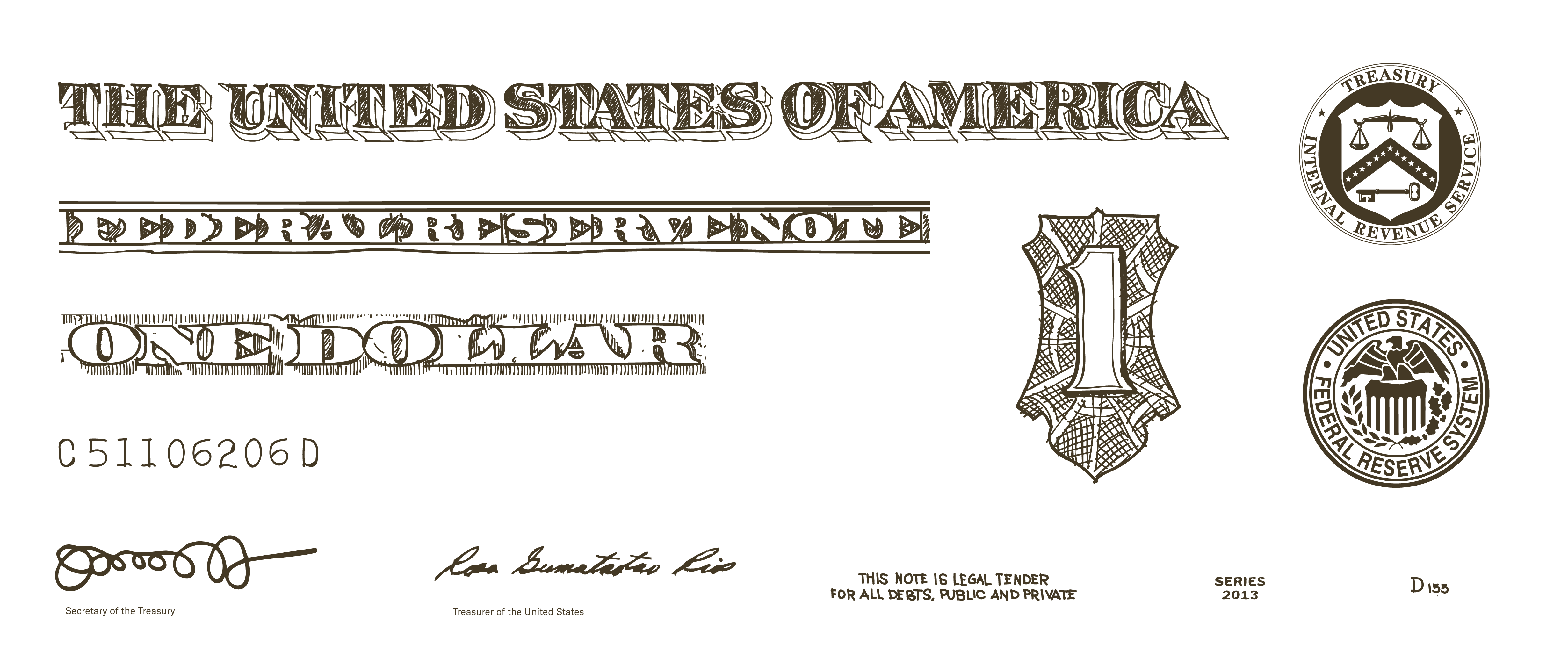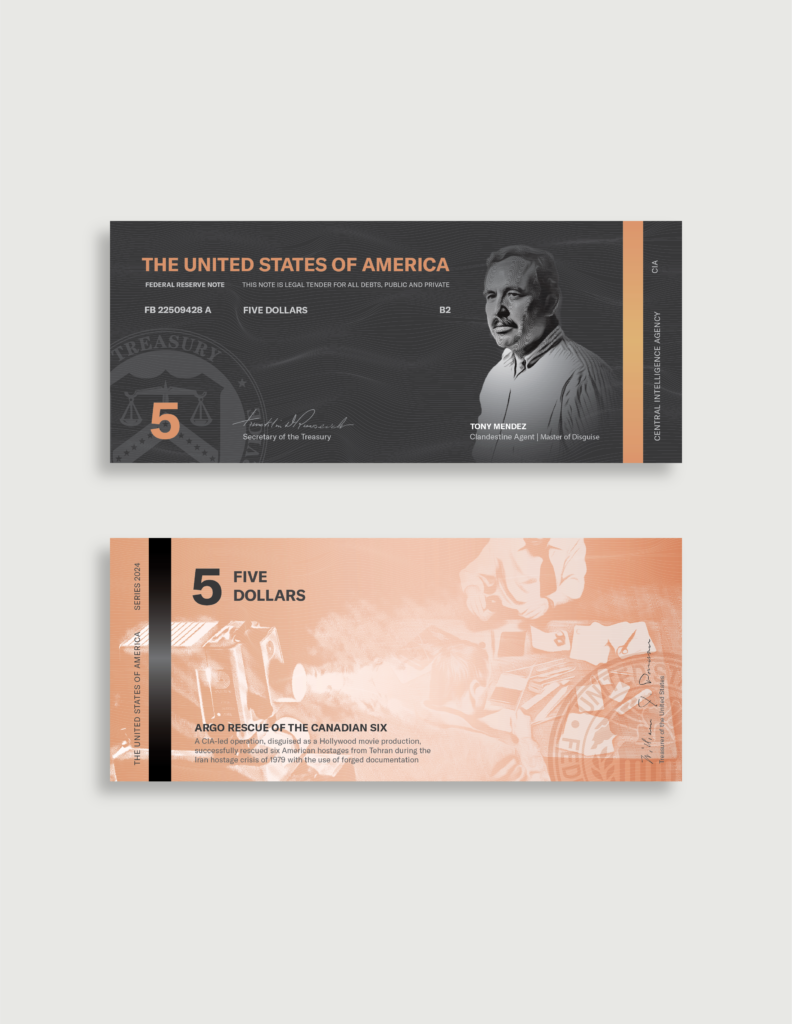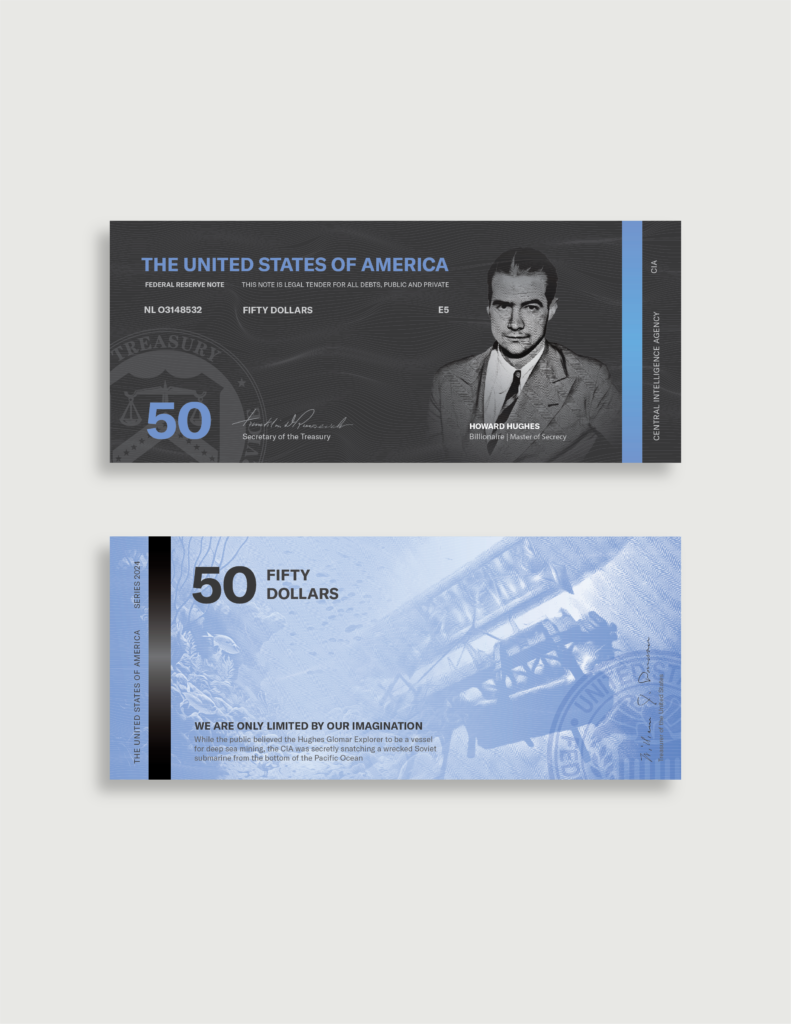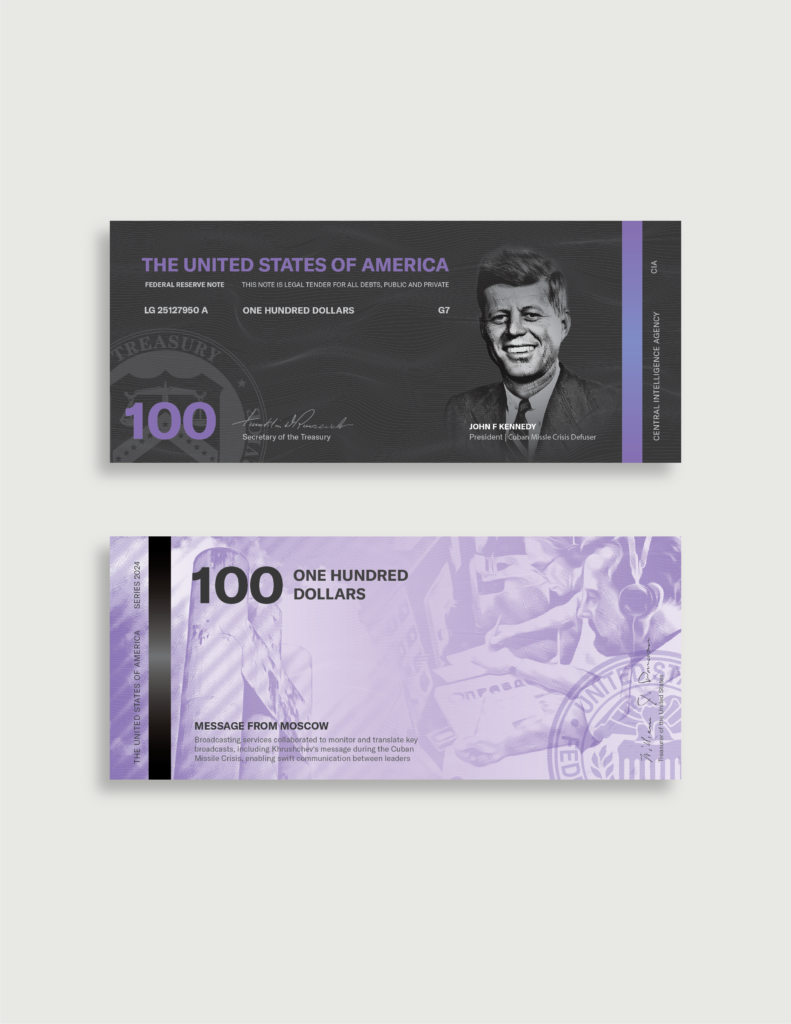CIA Currency Redesign
Layout and Typography
Target Audience
Americans
Programs Used
Illustrator, Photoshop
Tasked with the challenge to redesign American currency in a completely new way (for a school project of course), I landed on the theme of the Central Intelligence Agency (CIA). I chose this because I have a fascination with CIA TV shows and I have personal connections that I wanted to further explore. My great (x4?) grandfather started the CIA, which is an incredible two truths and a lie statement, might I add. He is featured on my 20 dollar bill.
Every bill tells the story of one of their undercover missions, later exposed. The back sides of the bill has imagery from the CIA Museum. The front of the bills showcases a key agent involved in the mission. Other design elements were inspired by CIA branding, such as the typeface and background pattern. Having this theme on American currency would teach Americans about this history and honor the agents protecting us from the shadows.
Elements to Include



Les Marguerites Fleuriront Ce Soir
Virginia Hall, the first female CIA officer, went undercover as a milkmaid into Nazi-occupied France.
She coordinated supply drops using code phrases like the title, trained resistance fighters, and provided critical intelligence.
I had to put her on my one dollar bill for being the first woman in operations. That takes a lot of bravery and she did it all with only one leg.

Argo: Rescue of the Canadian Six
This mission is one I had heard of before, as my second cousin was working for the CIA in Iran with a price on his head at the time.
It’s the 1979 rescue of six American diplomats from Tehran under the guise of a fake Hollywood film production.
The mission involved crafting false identities, disguises, and forged documents to smuggle the diplomats out of Iran as part of a supposed sci-fi movie, Argo. Successfully executed despite immense risks, the operation remains one of the most daring exfiltrations in history.

Quiet Courage
Adolf Tolkachev, a Soviet engineer, became one of the CIA’s most valuable Cold War assets, secretly giving intelligence on Soviet military technology for six years.
Despite numerous security risks, he preferred direct meetings and smuggled classified documents to photograph them at home. His sacrifice significantly weakened Soviet military advancements, making him a pivotal figure in U.S. intelligence history.

Irrawaddy Ambush
William J. Donovan, my great-great-great-grandfather, founded the OSS and led Detachment 101 in WWII, pioneering modern U.S. Special Operations. His guerrilla forces disrupted Japanese supply lines and played a key role in reclaiming Burma.
Honoring him on my twenty-dollar bill recognizes his legacy in intelligence and unconventional warfare, which continues to shape U.S. military strategy today.

We are only limited by our imagination
Project AZORIAN, the CIA’s covert 1974 mission to recover a lost Soviet submarine.
While the public believed the Hughes Glomar Explorer to be a vessel for deep sea mining, a massive mechanical claw lifted part of the wreckage, revealing critical Soviet secrets.
Though a full recovery failed, the mission advanced deep-sea technology and remains legendary in espionage history.

Message from Moscow
The Foreign Broadcast Monitoring Service (FBMS) played a crucial role in U.S. intelligence by intercepting and analyzing Axis propaganda during WWII and later monitoring global communications, including the Cuban Missile Crisis.
Its rapid translation of Khrushchev’s message helped defuse nuclear tensions, showcasing the power of open-source intelligence.
